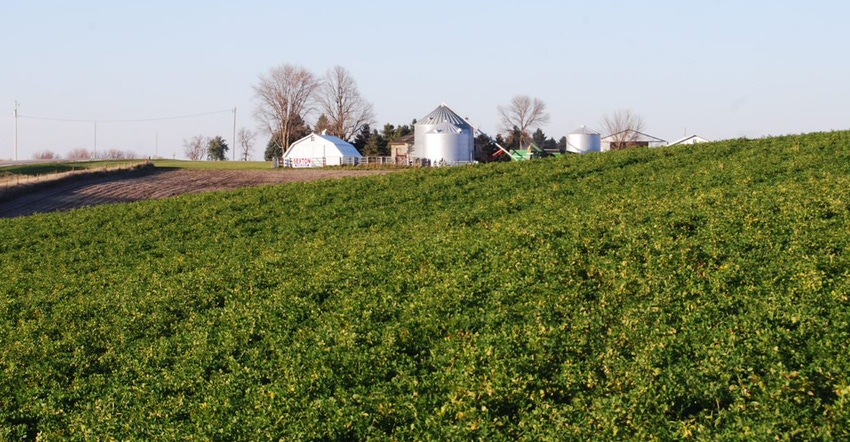November 8, 2019

The financial liquidity of farms across Iowa has been in decline over the past several years, despite a slight increase in 2018. A recent study of 214 midsize Iowa farms, conducted by Iowa State University Extension economist Alejandro Plastina, found 44% of the farms could be classified as having “vulnerable liquidity” in December 2018, while that percentage was just 31.3% in December 2014.
These results and more analysis are featured in ISU’s October 2019 Ag Decision Maker Newsletter, in an article titled Farm liquidity slightly up, but still subdued.
Plastina says farm liquidity improved slightly in 2018, mostly due to the $646 million Iowans received from Market Facilitation Program payments, provided by USDA. However, he says the long-term trend, since 2014, has been one of significant decline.
Conditions in 2019 remain poor
“While liquidity improved slightly in 2018 due mostly to the MFP payments, the cumulative loss in working capital since 2014 has averaged $189 per acre across the farms in my study,” Plastina says. And given the difficult growing season of this year, he expects 2019 financial numbers to be poor, as well.
“A massive number of delayed and prevented planting acres, low crop prices, reduced demand from biofuel refineries, and trade uncertainties in 2019 present a challenging liquidity scenario for farmers in Iowa,” Plastina notes. “A new round of MFP payments will certainly help mitigate liquidity gaps this year, but the question remains on the sustainability of these payments through time. How long can the federal government keep providing these payments?”
Average accrued net farm income in Iowa declined by 89% from its peak at $243,072 in 2012 to $27,927 in 2015, before recovering to $58,832 in 2018. Farm profitability will be a priority issue at ISU Extension’s farm management meetings this fall and into the winter season.
ISU Extension has more than 50 farm bill meetings planned, and dates have also been set for the Pro-Ag Outlook and Management Seminars, as well as Ag Chemical Dealer meetings.
Farm values continue decline
Another recent report compiled by Plastina shows the average accrual net farm income (adjusted for inventory changes and accrued expenses) increased by 6% in 2018, to $58,832. “It wasn’t a huge increase in income but at least we didn’t see a decline,” he says. “However, the rate of return on assets remains very low compared to historical averages.”
The average value of total farm assets declined by $147,471 (6%) and the average value of farm net worth declined by $121,876 in Iowa in 2018, according to the 2018 Farm Costs and Returns analysis. About 600 farmers provided income and expense data for this report, which is organized through a collaboration of ISU Extension and the Iowa Farm Business Association.
Kent Vickre, state coordinator with IFBA, says this data “definitely reflects farmers’ struggles with profitability. There are only so many years farmers can borrow from their net worth. They can’t keep doing this year after year for very many years.” The average debt-to-asset ratio remained stable in 2018, at 24%, but it is also the highest level since 2009.
USDA assistance plays key role
In addition to yearly comparisons, this study also compared farms based on total value of gross sales, and by their degree of profitability. The analysis was limited to farms with sales of $100,000 or more. Surprisingly, perhaps, is the decline in farm size, with the average farm size in this study declining by 21 acres — the lowest since 2013, to an average size of 668 acres.
Vickre isn’t sure why farms may have decreased in acreage, unless some farmers gave up some rented ground deemed unprofitable. He says it’s also possible some farmers were frustrated and didn’t report all their full acreage farmed.
Because data is delayed by one year in this study, the report doesn’t contain 2019 information. “2019 saw severe flooding in the spring and planting delays, and now a delayed harvest,” Vickre says. “That could reduce yields when all is said and done for 2019. Crop conditions vary widely across the state this year.”
Also, government financial help for farmers plays into the profitability of 2019, he notes. Flood-related disaster assistance has been made available, and farmers are also being compensated by USDA’s Market Facilitation Program for part of their trade war losses.
About the Author(s)
You May Also Like






